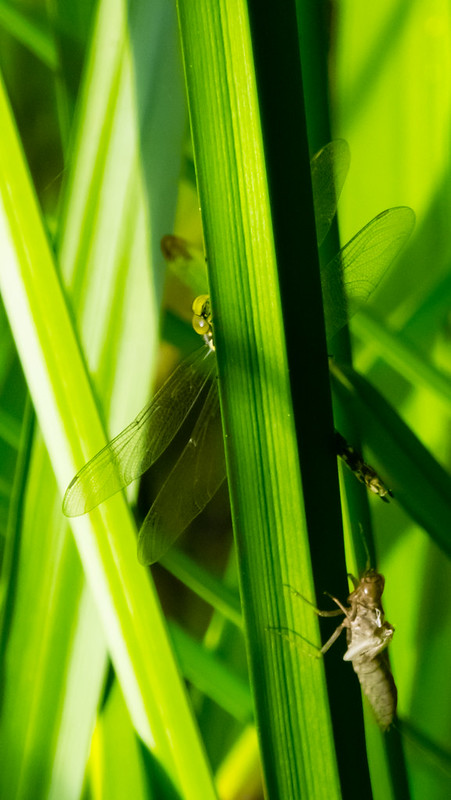Southern hawker dragonflies emerging on a warm autumn morning. The insect has spent at least two years living under the waters of a pond in its juvenile stage, as a nymph. Its last act as a nymph is it crawl up the leaf or stem of a plant into the warm morning air. The skin of the nymph splits along the back. The adult insect emerges, leaving behind the exuvia. It then needs to spend some time warming and drying itself before it is ready to fly.
Category: David
The second scarce bird on the same small creek: a glossy ibis. During my brief visit it was feeding less than two hundred yards further downstream than the lesser yellowlegs (yesterday’s post). The bright colours of the plumage which gives the bird its name come across more clearly in some of the photos than they did in the lighting conditions on the day.
Fremington Pill, a small creek running into the Taw and Torridge estuary, attracted two rare waders in September. Lesser yellowlegs are north American birds, but a handful end up being blown across the Atlantic to end up in Britain every autumn.
A flying visit to the area was fortunate that it must have been just at the right stage of the tide. The bird was showing well as it sifted the soft mud for food, seemingly undisturbed by the small group of birders focussed on it. It looked to be in good condition, despite the marathon flight for such a small bird.





